Written by: Evelyn Huang, MD (NUEM ‘24) Edited by: Vytas Karalius, MD, MPH (NUEM ‘22)
Expert Commentary by: Cedric Dark, MD, MPH
Health Insurance: The Basics Every Doctor Should Know
A Brief History of Insurance in the U.S.
In 1929, teachers in Dallas contracted with Baylor University Hospital to have monthly payments in exchange for up to 21 days of inpatient care a year. By 1937, there were 26 similar plans that all combined to form the Blue Cross network. In the 1930s, physicians also formed a network of insurance plans known as Blue Shield [1].
During World War II, wage controls prevented employers from raising salaries. As a result, they started to offer health insurance. The IRS added that employers and employees did not have to include these costs in their taxable income [1].
In 1944, President Franklin Roosevelt called for an “Economic Bill of Rights” that included the right to medical care that was never passed. President Truman proposed national health insurance for all Americans that was unpopular due to anti-communist sentiment [1, 2].
In 1965, Medicare and Medicaid were created. In 1972, Medicare was extended for people under 65 who had long-term disabilities and/or end-stage renal disease [2].
In 2010, the Patient Protection and Affordable Care Act (ACA) was passed [2].
Medicare Basics
As of 2019, Medicare covers approximately 61.4 million people [4]. Medicare is federally-run and has four parts:
Part A: inpatient services, nursing care, home health
Part B: outpatient services, ED visits
Part C: “Medicare Advantage,” enrolling in Medicare benefits through private insurers
Part D: prescription medications
Medicaid Basics
As of 2019, Medicaid covers approximately 75.8 million people and includes low-income adults, pregnant, and children [4]. Medicaid is unique from Medicare in that it is state-run with set federal regulations. The Affordable Care Act expanded eligibility to households with income up to 138% of the federal poverty level [2]. To date, 39 states including DC have adopted this expansion and 12 states have not, as seen in the map below [5].
Medicaid also includes the Children’s Health Insurance Program (CHIP) for children living in households that are under 200% of the federal poverty level and is state-run [2]. As of 2019, CHIP covers approximately 7.2 million children [4].
Patients that come to the emergency room are also able to apply for emergency Medicaid if they are currently uninsured. The details of this vary from state to state.
The Affordable Care Act
Signed into law 2010, the Patient Protection and Affordable Care Act had three main goals: expanding healthcare coverage, decreasing health care costs, and improving health care delivery.
Expanding healthcare coverage
Medicaid expansion
Individual mandate (discussed in “Private Insurance Basics”)
Requirements for employers to offer health insurance plans
Dependent coverage for children up to age 26
Removed insurance exclusions for patients with pre-existing conditions
Decreasing health care costs
Tax credits for small business employers that purchase health insurance for employees
Creation of health insurance exchanges
Insurance market rules, such as limiting deductibles and prohibiting lifetime limits of coverage
Discounts for prescription drugs for patients covered by Medicare
Improving health care delivery
National quality improvement strategies
Required health plans to cover preventative services
Bonus payments for primary care physicians
Grants for wellness programs
Required chain restaurants to disclose nutritional content
For more information on the ACA, visit this website.
Private Insurance Basics
The ACA enacted an individual mandate, which required Americans to have health insurance or face a tax fee. However, the individual mandate penalty was repealed starting in 2019. Private insurance can be purchased individually, through an exchange/marketplace (third-party markets created by the ACA) or is provided by employers [2].
The ACA also set up 10 essential health services that must be covered with insurance plans. This includes hospitalizations, ambulatory services, lab tests, prescriptions, and emergency services [7].
There are different types of private health insurances, and it is important to have a basic knowledge of this when caring for your patients [9]:
HMO (Health Maintenance Organization): you choose a primary care physician (PCP) that is in-network, you will need a PCP referral for any specialists, no out-of-network care is covered
PPO (Preferred Provider Organization): you can choose in-network providers (typically lower cost) or out-of-network providers, no referral needed for specialists
EPO (Exclusive Provider Organization): does not cover out-of-network providers, but do not need a referral for specialists
POS (Point of Service): you have a PCP that is in-network and that must give you a referral to see a specialist, but you can also access out-of-network options for a higher cost
Catastrophic plan: only available for people under 30 or with a hardship exemption (affordability exemption), low premium and high deductible, theoretically only used for serious illness
Insurance plans on the marketplace also have different metal tiers to their plans. As you go up in tiers, the insurance company pays more when you get healthcare, with a higher associated monthly premium. If someone utilizes a lot of health care, a higher tier choice is better [8].
Bronze: lowest premium, higher cost that you must pay when obtaining care, high deductible
Silver: moderate premium, moderate cost when obtaining care
Gold: high premium, low cost when obtaining care, low deductible
Platinum: highest premium, lowest cost when obtaining care, low deductible
Insurance Definitions You Should Know
Premium: monthly payment to insurance company regardless of whether you use the insurance
Deductible: how much you pay for health services before insurance starts to pay
Plans with lower premiums typically have higher deductibles
Usually, you will still need to pay copays and coinsurance if you reach your deductible until you meet your out-of-pocket maximum
Out-of-pocket maximum: after this level, insurance will pay for 100%
Includes deductible, copay, and coinsurance
The ACA established that policies must include an out-of-pocket maximum
For 2020: $8,150 for an individual and $16,300 for a family [9]
Copay(ment): fixed payment for specific service or medication
E.g. You pay $20 every time you see your PCP
Coinsurance: Percentage of cost that you pay before the out-of-pocket maximum
E.g. You pay 20% every time you see your PCP
Part of medical care is knowing that there is an associated cost with every test and treatment that we use. Medical insurance is essential to this, and it is important to know the basic ideas and language surrounding insurance, so that we can better serve our patients.
References
1. Moseley III GB. The U.S. Health Care Non-System, 1908-2008. AMA Journal of Ethics. 2008;10(5):324-331.
2. Schlicher N, Haddock A. Emergency Medicine Advocacy Handbook. 5th ed. Irving: Emergency Medicine Residents’ Association; 2019:1-8.
3. What's Medicare?. Medicare.gov. https://www.medicare.gov/what-medicare-covers/your-medicare-coverage-choices/whats-medicare. Accessed August 18, 2020.
4. CMS Fast Facts. Cms.gov. https://www.cms.gov/Research-Statistics-Data-and-Systems/Statistics-Trends-and-Reports/CMS-Fast-Facts. Published 2020. Accessed August 18, 2020.
5. Status of State Medicaid Expansion Decisions: Interactive Map. KFF. https://www.kff.org/medicaid/issue-brief/status-of-state-medicaid-expansion-decisions-interactive-map/. Published 2020. Accessed August 18, 2020.
6. Summary of the Affordable Care Act. KFF. https://www.kff.org/health-reform/fact-sheet/summary-of-the-affordable-care-act/. Published 2013. Accessed November 10, 2020.
7. Norris L. Obamacare's essential health benefits. healthinsurance.org. https://www.healthinsurance.org/obamacare/essential-health-benefits/. Published 2020. Accessed August 18, 2020.
8. The 'metal' categories: Bronze, Silver, Gold & Platinum. HealthCare.gov. https://www.healthcare.gov/choose-a-plan/plans-categories/. Published 2020. Accessed September 8, 2020.
9. Lalley C. Health insurance basics: The 101 guide to health insurance. Policygenius.com. https://www.policygenius.com/health-insurance/learn/health-insurance-basics-and-guide/. Published 2020. Accessed August 18, 2020.
10. Out-of-pocket maximum/limit. HealthCare.gov. https://www.healthcare.gov/glossary/out-of-pocket-maximum-limit/. Published 2020. Accessed August 18, 2020.
Expert Commentary
Every year, I instruct our medical students and residents on the “Anatomy & Physiology of the United States Health Care System” using a historical journey from the first Blue Cross plan in Dallas crafted for schoolteachers until the modern era of the Affordable Care Act. Along the way, we have added in a piecemeal fashion to our nation’s health care system such that seniors and low-income Americans have coverage carved out for them. Everyone else is reliant upon employer insurance for coverage or must purchase for themselves. Because of our country’s surprisingly involvement in financing health care for its citizens – over 36 percent is paid by the federal government – some commentators have declared the U.S. is an “insurance company with an army.”
While national health expenditures and financing our system are big picture items everyone in the health care sector should understand, we must also understand the small details that are most relevant to patients, such as common terminology regarding their insurance types and the payments they are required to pay at the point of service.
Cedric Dark, MD, MPH
Assistant Professor
Department of Emergency Medicine
Baylor College of Medicine
How To Cite This Post:
[Peer-Reviewed, Web Publication] Huang, E. Karalius, V. (2022, Oct 10). Health Insurance Basics. [NUEM Blog. Expert Commentary by Dark, C]. Retrieved from http://www.nuemblog.com/blog/health-insurance-basics
















